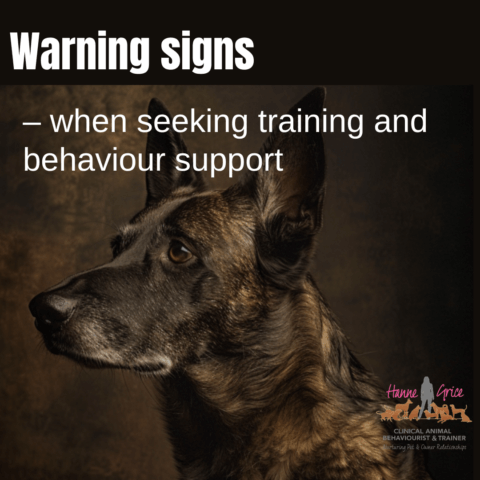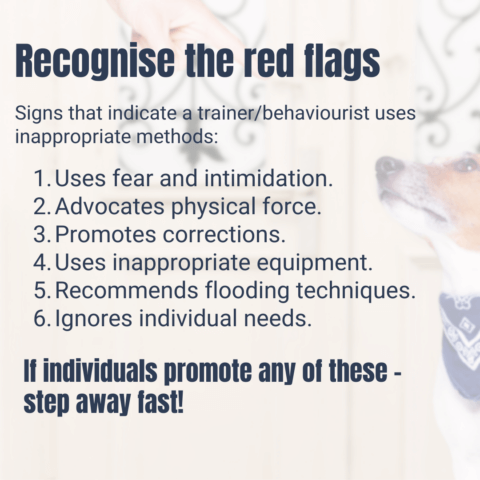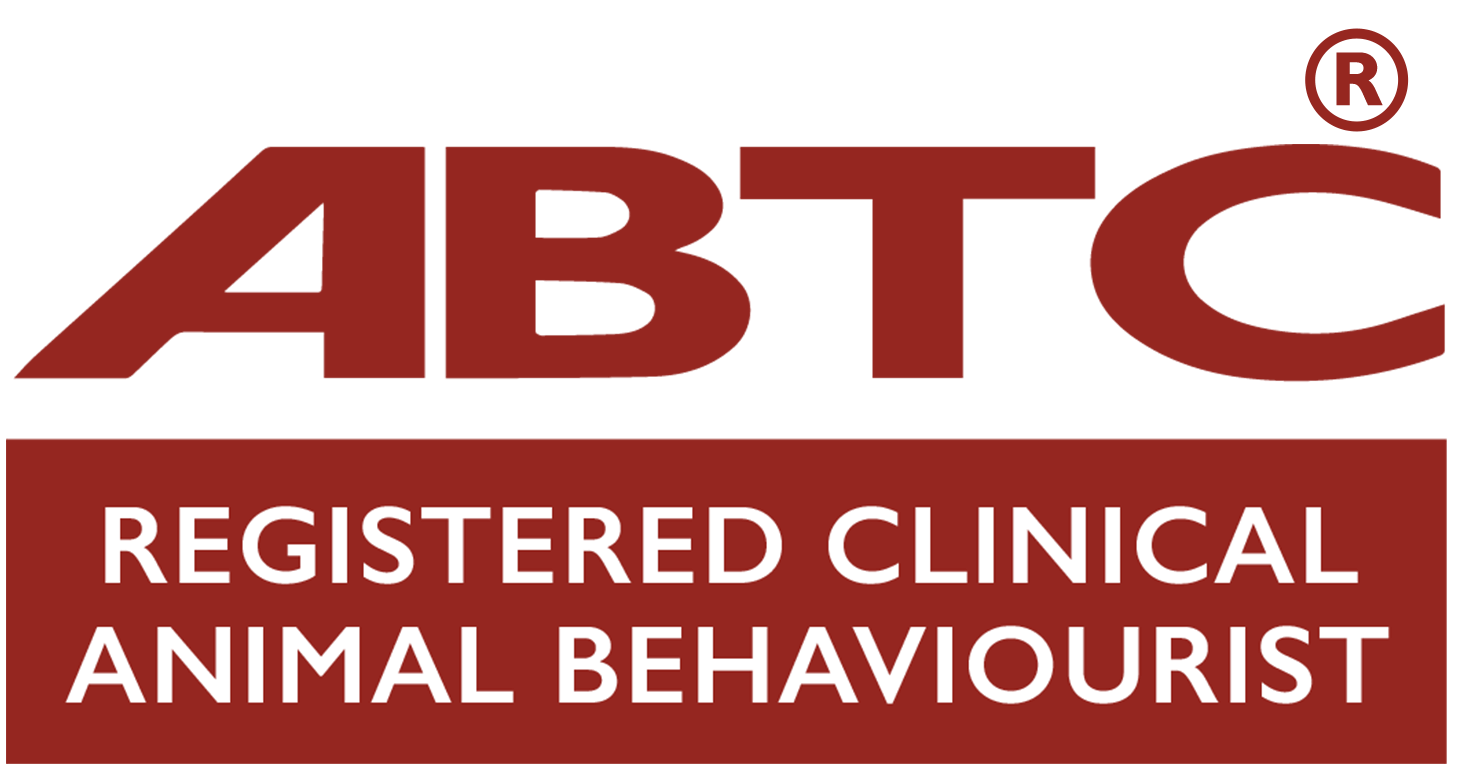
Recently, I worked with a case that underscores the importance of compassionate and science-based dog training and behaviour. A young dog seized from a breeder prosecuted for neglect faced severe trauma after enduring prolonged confinement in crates. This poor dog developed a profound fear of sudden sounds and movements, particularly around metal; the RPSCA had surmised that this was likely initiated by things being thrown at the crate – perhaps to quieten the dog and her siblings during confinement. Having been rehomed, the owner found the dog had an extreme startle response and would bark and lunge toward unfamiliar people, vehicles, and anything else that moved, indicating deep-seated fear and anxiety.
The new owner, seeking advice, turned to a dog trainer they had used with their previous dogs, as this was a ‘trusted’ source. The trainer advised they throw a metal chain toward the dog’s rear to stop barking and pulling. This method succeeded in escalating the dog’s fear responses and taught the dog that her caregivers were unpredictable with their interactions, driving confusion, frustration, and anxiety across contexts. Other recommended techniques during their training sessions included physically placing the dog into positions (such as sit and down – known as ‘modelling’), shouting “no” when the dog barked, and using lead corrections on a slip lead, exacerbating the dog’s stress and trauma. The same trainer also encouraged using treats, however, failed to provide clear guidance on utilising food to maximum effect, marking desired behaviours, environmental set-up, and never discussed the risk of using punishment-based methods, etc. The dog’s over-reactive responses remained, and escalated into dog bites on family members, requiring hospital treatment.
What the science says…

To understand why these methods failed so drastically in stopping the dog’s barking and lunging and escalated to dog bites, it’s essential to look at the significant drawbacks of punishment-based and ‘balanced’ training. Research in domestic dog behaviour has significantly increased in recent years. Thanks to this increased focused onto dog behaviour, canine cognition, effects of differing handling methods and more, the science has repeatedly highlighted that dogs trained using aversive methods, such as shouting and physical punishment, exhibit higher levels of stress, fear, and aggression compared to those trained with positive reinforcement (Ziv, 2017). Dogs subjected to punitive training are more likely to display undesirable behaviours, including increased anxiety and aggression (Hiby et al., 2004).
Aversive methods such as shock collars are particularly harmful. Schilder and van der Borg (2004) study demonstrated that dogs trained with shock collars showed increased stress signals, both during and after training sessions, compared to those trained without such devices. These findings underscore the long-lasting negative effects punitive techniques can have on a dog’s mental and emotional well-being. Such evidence strongly supports the use of positive reinforcement methods, which not only improve the dog’s behaviour but also enhances the human-animal bond.
Positive reinforcement methods are often misunderstood by supporters of aversive methods, arguing that it’s giving the dog permission to bark and lunge, ignore the bad behaviour and shove a load of food at the dog instead – this is bunkum. It is about taking a holistic approach; it is about looking at all the information the professional can gather, identifying the underlying motivations so they can make a more accurate behavioural diagnosis[ses], and create a robust behaviour modification plan that is executed with excellence with the expert working collaboratively with the vet, the client[s] and their animal. This will include utilising excellent dog and environmental management, promoting relaxation to enable learning, and using humane and ethical training and behavioural techniques to drive positive change, all the while working at that individual animal’s pace.

How to recognise the red flags in dog training/behaviour
Given the significant impact training methods can have on a dog’s well-being, it’s crucial to recognise the warning signs or ‘red flags’ when seeking support for your pet, watching videos online and or searching the internet for advice.
Below are some signs that indicate a trainer or behaviourist is using inappropriate methods and you should immediately step away:
- Uses fear and intimidation: Any method that involves scaring the animal, such as throwing objects, spraying, or using loud noises, can be harmful and counterproductive. Studies show that such techniques increase stress and anxiety in dogs (Blackwell et al., Casey, 2008).
- Advocates physical force: Techniques that involve pushing, pulling, or forcing the animal into positions can cause physical harm and increase anxiety and aggression. Research indicates that physical punishment can lead to a range of behavioural problems, including fearfulness and avoidance behaviours (Herron et al., 2009).
- Promotes corrections: Shouting “no,” jerking the lead, smacking, or any form of physical punishment can exacerbate fear and lead to more severe behavioural issues. Positive reinforcement has been shown to be more effective in achieving desirable behaviour without the adverse side effects of punishment (Schilder & van der Borg, 2004).
- Uses inappropriate equipment: Be wary of trainers who use choke chains, prong collars, or shock collars. These tools are designed to cause discomfort or pain, and their use is associated with increased aggression and fear in dogs (Polsky, 2000). See the list of aversive tools and methods to avoid, as outlined via the Animal Behaviour & Training Council (ABTC) at Aversives-March-2023.pdf (abtc.org.uk)
- Recommends flooding techniques: Flooding is an inappropriate method of behaviour modification. In this method, a dog is exposed to a feared stimulus at full intensity without the opportunity to escape. Flooding is highly traumatic and can lead to increased fear and anxiety. Research shows that this method is ineffective and can worsen the dog’s behavioural issues (Overall, 2013).
- Ignores individual needs: Every animal, just like us, is unique and has particular needs, especially those with a history of trauma. Dog training and behaviour modification methods should be tailored to address the specific needs and conditions of the individual dog. One-size-fits-all approaches like the trainer’s recommendation to throw a metal chain behind the dog when she barked/lunged because it had worked with others, are often ineffective and can be harmful. Furthermore, as trainer Niki Tudge (2016) has eloquently pointed out – individuals not proficient in their craft may progress more quickly to aversive protocols.
A positive path forward
Returning to the case of the rescue dog – the owner, recognising the failure of previous methods, sought advice from their vet, who recommended a registered Clinical Animal Behaviourist. This led them to me and I have immense respect for my client’s determination to help their rescue dog, trusting in another person to help them, and I am committed to supporting them through this challenging journey.
The experience my client has already gone through with their rescue dog is a testament to the resilience of animals and the power of compassionate care. The client stepped back from their situation – took a helicopter view to assess the situation – and by doing so they understood that what may have “worked for others” was outdated and actually cruel. They recognised that shouting, applying lead corrections, and throwing down the metal chain only made them feel better where it momentarily interrupted the barking. Such methods failed to address the problem and underlying motivations, failed to teach the dog what to do instead, and had succeeded in her learning that their owner was unpredictable, resulting in exacerbating the dog’s stress and trauma. The owner is now embracing humane, evidence-based methods, and in doing so, they will help their beautiful rescue become more resilient, leading to a happier, healthier life for all.
The key takeaway
If you or someone you know is seeking help for a pet, choose professionals who prioritise the well-being and mental health of animals and have the necessary knowledge, understanding, and practical skills to work at the level they advertise themselves to be. You can find such support via the Practitioner Directory on the Animal Behaviour & Training Council’s website, which lists animal training instructors and behaviour therapists in your local area that have been independently and rigorously assessed to the standards for those roles at Practitioners – ABTC.
Meanwhile, a wealth of peer-reviewed data and excellent articles are available regarding differing training and behaviour modification methods and the recorded outcomes. I have listed a handful of these studies in the references for further information. And, for further advice relating to red flag warnings, check out the TikTok channel Trauma Informed Dog Training featuring Nuffle the Border Collie, courtesy of behaviourist and trainer Danielle Beck.
References
- Blackwell, E. J., Twells, C., Seawright, A., & Casey, R. A. (2008). The relationship between training methods and the occurrence of behavior problems, as reported by owners, in a population of domestic dogs. Journal of Veterinary Behavior, 3(5), 207-217.
- Herron, M. E., Shofer, F. S., & Reisner, I. R. (2009). Survey of the use and outcome of confrontational and non-confrontational training methods in client-owned dogs showing undesired behaviors. Applied Animal Behaviour Science, 117(1-2), 47-54.
- Hiby, E. F., Rooney, N. J., & Bradshaw, J. W. S. (2004). Dog training methods: their use, effectiveness and interaction with behaviour and welfare. Animal Welfare, 13(1), 63-69.
- Overall, K. L. (2013). Manual of Clinical Behavioral Medicine for Dogs and Cats. Elsevier Health Sciences.
- Polsky, R. H. (2000). Can aggression in dogs be elicited through the use of electronic pet containment systems? Journal of Applied Animal Welfare Science, 3(4), 345-357.
- Schilder, M. B. H., & van der Borg, J. A. M. (2004). Training dogs with help of the shock collar: short and long term behavioural effects. Applied Animal Behaviour Science, 85(3-4), 319-334.
- Tudge, N. (2016) ‘Find solutions without progressing up!: Niki Tudge – The DogSmith’. [online] Available at: https://www.facebook.com/TheDogSmith/posts/10209100799390163
- Ziv, G. (2017). The effects of using aversive training methods in dogs—A review. Journal of Veterinary Behavior, 19, 50-60.
Learn more about our classes

Get Hanne's Book
Playing With Your Dog will help any dog owner work out the games that are best suited for their pet to play throughout his life, from puppyhood to old age. The book also shares some tricks for all ages, group activities, and recommended toys that dogs will enjoy.

























